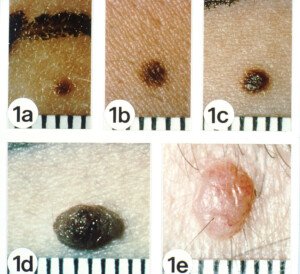
Have you noticed that some of your moles are raised, that is, clearly higher than the surface of the skin around them?
This doesn’t refer to moles that used to be flat and are now raised, but those that have always been this way—for as long as you can remember.
Perhaps you’re now wondering if these are more likely to transform into melanoma, a rare but deadly skin cancer if not caught in time.
So are raised moles more likely to develop into melanoma?
“NO,” says Dr. David Rahimi, MD, F.A.A.D., a board-certified dermatologist and cosmetic surgeon, and founder of Foreveryoung.net.
Dr. Rahimi explains, “The raised quality of a mole has nothing to do with its risk of malignant transformation or melanoma.”
Do you know your ABCDEs?
If you clicked on this article, you’re most likely familiar with the ABCDEs of checking lesions on your skin, so I won’t go into detail about this.
However, it’s reassuring to point out that Dr. Rahimi notes that the ABCDEs of screening for skin cancer do not mention anything about the “raised quality” of moles, birthmarks or freckles.
It’s crucial to get to know the natural marks and spots on your body so that, if they do begin changing in appearance, you’ll have a reference point.
Learn what’s normal for you. And have your skin checked by a dermatologist every year, even if this is not covered by your medical insurance.
Raised Moles Becoming Irritated
Depending on the location, a raised mole can receive recurring irritation from a piece of clothing.
This will not increase its malignant potential.
But if you decide to have a mole removed to avoid irritation or for cosmetic purposes, the rule of thumb is to always request that it be biopsied …
… not because it’s raised but because ANY mole that’s removed for ANY reason should always be biopsied.














